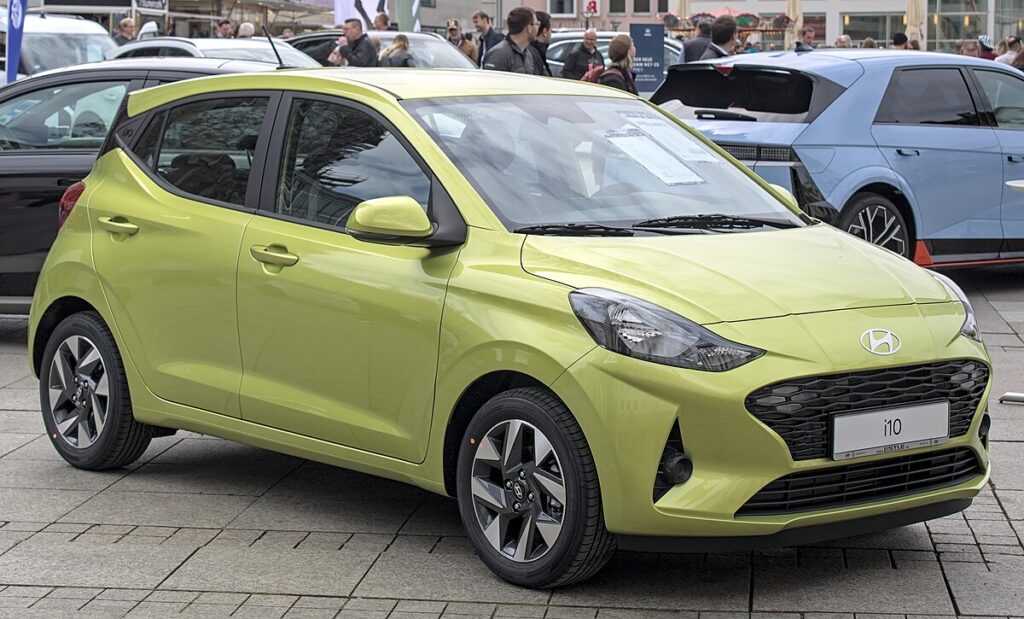
Hyundai i10 Wiper Blade Sizes (2007–2025): Complete Guide for Every Generation

Keeping your Hyundai i10’s windshield clear is more than just a matter of comfort—it’s a safety essential. The correct wiper blade size ensures efficient cleaning, silent operation, and complete coverage in any weather condition. In this comprehensive guide, we detail the exact wiper blade sizes for all Hyundai i10 generations, how to verify compatibility, and expert tips for selecting the best replacements.
- Understanding Hyundai i10 Wiper Blade Sizes
- Hyundai i10 Wiper Blade Size Chart by Generation
- Why Correct Wiper Blade Size Matters
- How to Verify Your Hyundai i10 Wiper Blade Size
- Choosing the Right Wiper Blade Type
- Recommended Premium Wiper Blades for Hyundai i10
- Signs It’s Time to Replace Your Wiper Blades
- Maintenance Tips to Extend Wiper Blade Life
- Rear Wiper Blade Replacement (Hatchback Models)
- Installation Guide for Hyundai i10 Wiper Blades
- Frequently Asked Questions
- Final Thoughts: Clear Vision, Confident Driving
Understanding Hyundai i10 Wiper Blade Sizes
Each Hyundai i10 generation comes with specific wiper blade sizes optimized for its windshield curvature and dimensions. Choosing the correct size is crucial for:
- Full windshield coverage without leaving streaks or blind spots.
- Smooth, noise-free operation even during heavy rain.
- Preventing mechanical wear to the wiper motor and arms.
Hyundai i10 Wiper Blade Size Chart by Generation
| Generation | Model Years | Driver’s Side | Passenger’s Side | Rear Blade (if applicable) |
|---|---|---|---|---|
| First Generation | 2007–2013 | 22 inches (550 mm) | 16 inches (400 mm) | 12 inches (300 mm) |
| Second Generation | 2013–2019 | 22 inches (550 mm) | 16 inches (400 mm) | 12 inches (300 mm) |
| Third Generation | 2019–Present | 22 inches (550 mm) | 16 inches (400 mm) | 12 inches (300 mm) |
Note: Always confirm sizes using your vehicle’s VIN or owner’s manual, as certain trims or regional variations (like Grand i10 or Nios models) may differ slightly.
Why Correct Wiper Blade Size Matters
Using incorrect blade sizes can lead to:
- Streaking and poor visibility during rain or snow.
- Premature wear due to excess friction or pressure.
- Damage to the windshield edges or the wiper motor if blades overlap.
- Noise and chattering caused by misalignment.
A properly sized blade ensures even pressure distribution and seamless cleaning motion.
You may be interested in reading How to Reset Hyundai i10 Tyre Pressure: Complete TPMS Reset and Maintenance Guide
How to Reset Hyundai i10 Tyre Pressure: Complete TPMS Reset and Maintenance GuideHow to Verify Your Hyundai i10 Wiper Blade Size
Before purchasing new blades, confirm the dimensions through one of these trusted methods:
- Owner’s Manual: The manufacturer’s official recommendation for front and rear wipers.
- Online Fitment Tools: Many auto parts websites let you input your make, model, and year for exact sizes.
- Physical Measurement: Measure your current blades with a tape measure from tip to tip.
- Parts Store Consultation: Auto parts retailers can instantly retrieve correct sizes using your license plate or VIN.
Choosing the Right Wiper Blade Type
When replacing your Hyundai i10’s wipers, consider both size and blade type. Below are the most common options:
1. Conventional Frame Blades
- Affordable and easy to install.
- Ideal for regions with moderate weather.
- Metal frame may corrode over time.
2. Beam (Flat) Blades
- Sleek design with uniform pressure distribution.
- Excellent for high-speed performance and reduced drag.
- Common in newer Hyundai i10 models.
3. Hybrid Blades
- Combine the strength of framed blades with aerodynamic flat-blade design.
- Offer quiet, streak-free operation.
- Perfect for urban environments with variable weather.
| Brand | Type | Key Features |
|---|---|---|
| Bosch Aerotwin | Beam | Quiet performance, long lifespan, easy click-fit |
| Valeo Silencio X-TRM | Hybrid | OEM quality, anti-lift design |
| Michelin Stealth Ultra | Hybrid | Advanced flex connector, even pressure |
| Rain-X Latitude Water Repellency | Beam | Coats windshield for water resistance |
| Trico Exact Fit | Conventional | Direct OEM fit, affordable pricing |
Signs It’s Time to Replace Your Wiper Blades
- Streaking or skipping during operation.
- Visible cracks or tears on the rubber edge.
- Squeaking or scraping sounds.
- Uneven cleaning or missed spots.
Most wipers should be replaced every 6–12 months, depending on climate and usage frequency.
Maintenance Tips to Extend Wiper Blade Life
- Clean the blades regularly: Wipe with a damp cloth to remove dirt and pollen.
- Avoid using wipers on a dry windshield: Always activate washer fluid first.
- Park away from direct sunlight: UV rays accelerate rubber deterioration.
- Lift wipers in winter: Prevent them from freezing onto the windshield.
- Inspect during each service interval: Especially before rainy or snowy seasons.
Rear Wiper Blade Replacement (Hatchback Models)
The Hyundai i10 hatchback features a small rear wiper blade—typically 12 inches long. Replacing it is straightforward:
- Lift the wiper arm gently from the rear glass.
- Press the release tab to remove the old blade.
- Attach the new one until you hear a click.
- Test it to ensure smooth, streak-free movement.
Installation Guide for Hyundai i10 Wiper Blades
- Lift the wiper arm: Pull it away from the windshield until it stays upright.
- Remove the old blade: Press the small tab where the wiper meets the arm, then slide it off.
- Align the new blade: Ensure the connector type matches (hook, pin, or side lock).
- Click into place: You should hear a firm snap when secure.
- Test operation: Spray washer fluid and verify smooth, silent motion.
Frequently Asked Questions
Q1: Can I install longer wiper blades for better coverage?
No. Longer blades may collide with the windshield edges or overlap, causing damage and uneven wiping.
 How to Reset Hyundai i10 Tyre Pressure: Complete TPMS Reset and Maintenance Guide
How to Reset Hyundai i10 Tyre Pressure: Complete TPMS Reset and Maintenance Guide Hyundai i10 Tyre Size Guide (2008–2024): Complete Factory and Upgrade Chart
Hyundai i10 Tyre Size Guide (2008–2024): Complete Factory and Upgrade ChartQ2: How often should I change Hyundai i10 wipers?
Replace every 6 to 12 months, or sooner if visibility decreases or noise develops.
Q3: Are silicone wiper blades better than rubber?
Yes. Silicone blades last longer, resist UV damage, and glide more smoothly, though they’re slightly more expensive.
Q4: Can I replace the rubber strip only?
Technically yes, but it’s recommended to replace the entire blade assembly for consistent pressure and performance.
Q5: Do rear wiper blades differ between trims?
Minor variations exist between i10, Grand i10, and i10 Nios, so confirm your model year before ordering.
Final Thoughts: Clear Vision, Confident Driving
Choosing the correct wiper blade size for your Hyundai i10 isn’t just about convenience—it’s about safety and visibility. With standard 22-inch driver and 16-inch passenger blades across all generations (plus a 12-inch rear blade for hatchbacks), replacement is simple and affordable. Regular inspection and timely upgrades ensure your i10 remains ready for every downpour, drizzle, or dusty day ahead.
You may be interested in reading How to Reset Hyundai i10 Tyre Pressure: Complete TPMS Reset and Maintenance Guide
How to Reset Hyundai i10 Tyre Pressure: Complete TPMS Reset and Maintenance Guide Hyundai i10 Tyre Size Guide (2008–2024): Complete Factory and Upgrade Chart
Hyundai i10 Tyre Size Guide (2008–2024): Complete Factory and Upgrade Chart Hyundai i10 Dashboard Warning Lights and Their Meanings: Complete Guide
Hyundai i10 Dashboard Warning Lights and Their Meanings: Complete GuideBy investing in premium-quality wipers and maintaining them correctly, you’re not just preserving your car—you’re protecting your journey.
If you want to know other articles similar to Hyundai i10 Wiper Blade Sizes (2007–2025): Complete Guide for Every Generation you can visit the category Service and Parts.
Deja una respuesta






More content of your interest